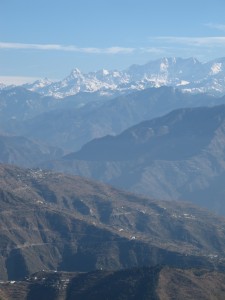 The Summer Olympic Games are long over. Nevertheless, I’m still a bit breathless (and not just because now I somehow think that I can actually run fast, or jump far, or spin in place without falling over, and so I try. To pretty ridiculous effect).
The Summer Olympic Games are long over. Nevertheless, I’m still a bit breathless (and not just because now I somehow think that I can actually run fast, or jump far, or spin in place without falling over, and so I try. To pretty ridiculous effect).
It’s the demonstration of courage that had me catching my breath. I’m not just thinking of the courage the athletes demonstrated to get to the games, although of course that courage was—and is—stunning. (Consider, for example, what it took US sprinter Bryshon Nellum, already something of a track superstar as a sophomore in college, to suffer and recover from being shot in the legs after two assailants mistook him for a rival gang member. His doctors said he’d never compete with other world-class athletes, but he did, a mere four years later).
I’m also thinking of the in-the-moment courage of setting up alongside fierce competitors in the starting blocks and seeing the track stretch out to the finish line. It’s the courage of having the hopes of a team, family, or community come with one onto the empty the field. It’s the courage of platform divers who walk to the edge of three-story-high platforms, turn their backs to the pool, press up into handstands, and launch themselves blind into dives that take them to the water at 35 miles per hour. That’s the courage that still makes me swallow hard.
It’s also the courage of another athlete—not yet an Olympian, but a fourth-grade girl who gathered up the heart to take off on her first ski jump and fly.
I stumbled across the video of this brave girl’s first jump a while ago and revisited it as the Olympic champions were swimming, running, diving, rowing and being generally stupendous. Now I am one of who-knows-how-many people who have watched the video nearly 1.7 million times. It’s star, too, is stupendous. From a camera attached the girl’s helmet, we see what she sees—the tips of red skis against a long swoop of white—as she readies herself at the top of the ski jump. She first tries talking herself into pushing off, telling herself that she’ll be fine, that she’ll do it, that “here… goes… something, I guess.” But this isn’t yet enough to get her going down the hill. Behind her we hear the voice of an adult—maybe her coach, maybe her dad, maybe a friend—who gives her advice, assures her that she’ll be fine, tells her what to expect, that it’s like what she’s used to, just longer. While giving her a shot of confidence, this still isn’t quite enough, and fear makes the girl’s voice tremble. Finally, we hear the voice of someone else behind her, another young girl who’s obviously been in the very same position. This calm, knowing voice says, “You’ll be fine.” And then, “The longer you wait, you’ll be more scared.” That wise advice and steady presence gives the young jumper the momentum she needs. In the span of one breath, she says, “Here… I… go,” and she begins her flight.
We all have different fears, and what might take courage for me may be a breeze for you. But surely most of us share the common, more existential fear of failure, whatever our aims may be. Much of what we do feels like flinging ourselves off of a steep drop-off, one intimidating enough to cause us to turn around, take off our gear, and tell ourselves that that we didn’t really want to do it anyway. Or that the goal is stupid. Or that the rest of the world is stupid. Or that we are stupid.
It’s hard to know how to gather the heart we need in the midst of the fear of failure. Milton Glaser, a brilliant graphic designer, offers this bit of advice:
You must admit what is. You must find out what you’re capable of doing and what you’re not capable of doing. That is the only way to deal with the issue of success and failure because otherwise you simply would never subject yourself to the possibility that you’re not as good as you want to be, hope to be, or as others think you are (“On the Fear of Failure“).
Admitting what is; that alone takes courage. I’m grateful to say that seeing and admitting “what is” has been one of the gifts of my yoga practice. In my experience, practicing the yamas, niyamas and asanas has helped me move more gracefully through the world, with more peace, since they have helped me place myself in a more balanced, less dependent and attached relationship with others and with my own desires and expectations. Much of the time, I can hold steady in the face of reality, even scary reality. By practicing pranayama, pratyahara, dharana, and dhyana, I have come nearer to a reality that I never knew I carried within myself: a vastness whose center is pure stillness. Full. Complete. Knowing that this is there all the time makes facing the moments when I’m not practicing somehow easier, even sometimes, somehow grace filled.
Just as we all don’t have the same fears, we all don’t have kind and wise friends or experienced mentors who will cover our backs, offer us good advice and steady assurance, and care if we’re scared or confident. According to the yogic sages, however, ultimately and fundamentally we alone are sufficient. Within the vast stillness inside each of us is an all-knowing self with the wisdom and ability to guide us to our highest good, if only we become quiet and focused enough to hear it.
I’ve learned to listen hard for that voice. Sometimes it speaks loud and clear, and other times… well, not so much. And while I cannot say that I always muster up the courage to step off into the unknown, more and more I walk right up to that edge, stand facing forward, and with eyes wide open, really see what is.


